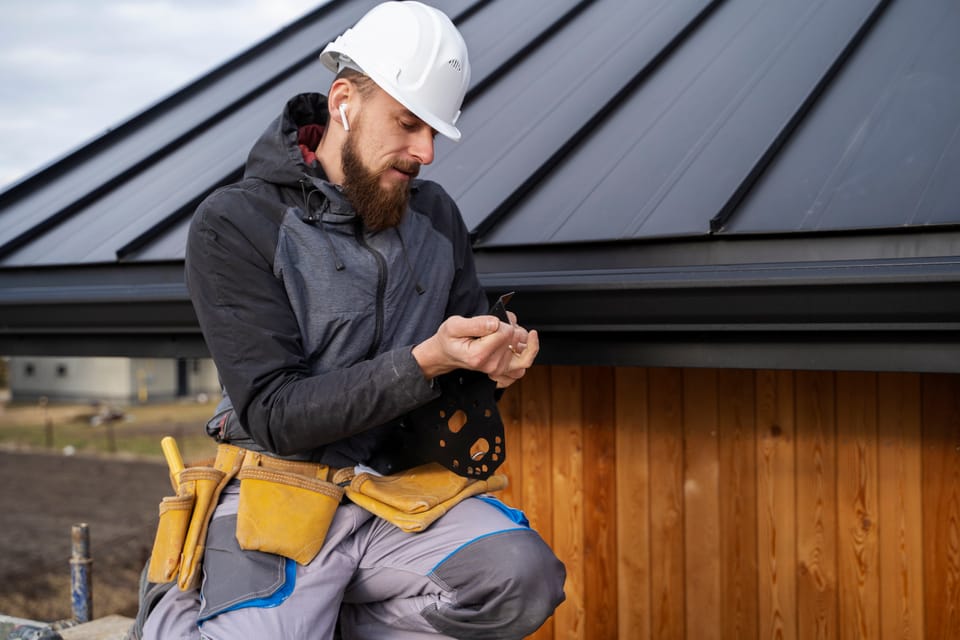How to Replace Your Roof for Under $6,000: Expert Advice and Strategies

Replacing a roof can be one of the most significant home improvement projects, often costing homeowners thousands of dollars. However, with careful planning, strategic choices, and some expert advice, you can achieve a roof replacement for under $6,000. This article will guide you through the essential steps, cost-saving strategies, and expert tips to make your roof replacement project both affordable and successful.
1. Assessing Your Roof's Condition
Before diving into a roof replacement, it's crucial to assess the current condition of your roof. Look for signs of damage, such as:
- Missing or Damaged Shingles: Check for any shingles that are cracked, curled, or completely missing.
- Leaks or Water Damage: Inspect your attic and ceilings for signs of water damage or leaks.
- Sagging Areas: Any sagging in your roof may indicate structural issues that need to be addressed before replacement.
If the damage is minor, you might only need to make repairs rather than a full replacement. However, if you identify significant issues, a replacement may be necessary.
2. Choosing the Right Roofing Material
The choice of roofing material greatly affects the overall cost of your project. Here are some budget-friendly options to consider:
- Asphalt Shingles: One of the most common and affordable roofing materials, asphalt shingles can be found for as low as $90 per square (100 square feet).
- Metal Roofing: While slightly more expensive than asphalt, metal roofing is durable and energy-efficient, offering long-term savings.
- Architectural Shingles: A step up from traditional asphalt shingles, architectural shingles provide better aesthetics and durability without a significant price increase.
By comparing the costs and benefits of various materials, you can select an option that fits your budget while ensuring quality and longevity.
3. DIY vs. Hiring a Professional
Deciding whether to tackle the project yourself or hire a professional contractor is crucial. Here are some considerations:
DIY
- Cost Savings: Doing it yourself can save you labor costs, which can be a significant portion of the overall expense.
- Skill Level: If you're handy and have experience with roofing projects, this can be a viable option. However, ensure you have the necessary tools and safety equipment.
Hiring a Professional
- Expertise: Professional roofers have the experience to spot potential issues and perform the job correctly.
- Time-Saving: A professional can often complete the job much quicker than a DIY project, minimizing the inconvenience to your household.
- Warranty: Many roofing contractors offer warranties on their work, providing peace of mind for future repairs.
4. Budgeting Your Project
Creating a detailed budget will help you stay on track and avoid overspending. Here’s a breakdown of potential costs:
- Material Costs: Depending on the material you choose, budget between $2,000 and $4,000 for materials.
- Labor Costs: If you hire a contractor, labor can range from $1,500 to $3,000, depending on your location and the project's complexity.
- Additional Expenses: Don’t forget to include costs for permits, waste disposal, and any necessary repairs to the underlying structure.
Aim to keep your total expenses under $6,000 by sticking to your budget and being mindful of costs throughout the project.
5. Exploring Financing Options
If upfront costs are a concern, consider exploring financing options. Some strategies include:
- Home Equity Loan or Line of Credit: These options allow you to borrow against the equity in your home, often at lower interest rates than credit cards.
- Government Programs: Look into local or federal programs that offer financial assistance for home repairs and improvements.
- Flexible Payment Plans: Some roofing contractors offer financing or payment plans, making it easier to manage costs over time.
6. Finding the Right Contractor
If you decide to hire a professional, take the time to find a reputable contractor. Here are tips for selecting the right one:
- Get Multiple Quotes: Obtain quotes from at least three different contractors to compare pricing and services.
- Check References: Look for reviews and references from previous customers to gauge the contractor's quality of work.
- Verify Licensing and Insurance: Ensure that the contractor has the necessary licenses and insurance to protect you in case of accidents or damages during the project.
7. Preparing for the Project
Preparation is key to a smooth roof replacement process. Here are some steps to take:
- Clear the Area: Move any outdoor furniture, plants, or vehicles away from the work area to prevent damage.
- Notify Neighbors: Let your neighbors know about the project to minimize any disturbances and maintain good relations.
- Plan for Debris Removal: Discuss with your contractor how debris will be removed and disposed of during the project.
8. Timing Your Roof Replacement
The timing of your roof replacement can significantly impact your costs and success. Here are some tips:
- Off-Season Timing: Schedule your project during the off-season (typically late fall or early spring) when contractors may offer lower rates.
- Weather Considerations: Avoid extreme weather conditions that can hinder the installation process, such as heavy rain or snow.
Conclusion
Replacing your roof doesn't have to break the bank. By following these expert tips and strategies, you can achieve a quality roof replacement for under $6,000. Remember to assess your roof's condition, choose the right materials, consider DIY options, budget wisely, explore financing, find a reliable contractor, and plan effectively for the project. With careful planning and execution, you’ll not only protect your home but also save money in the process.



